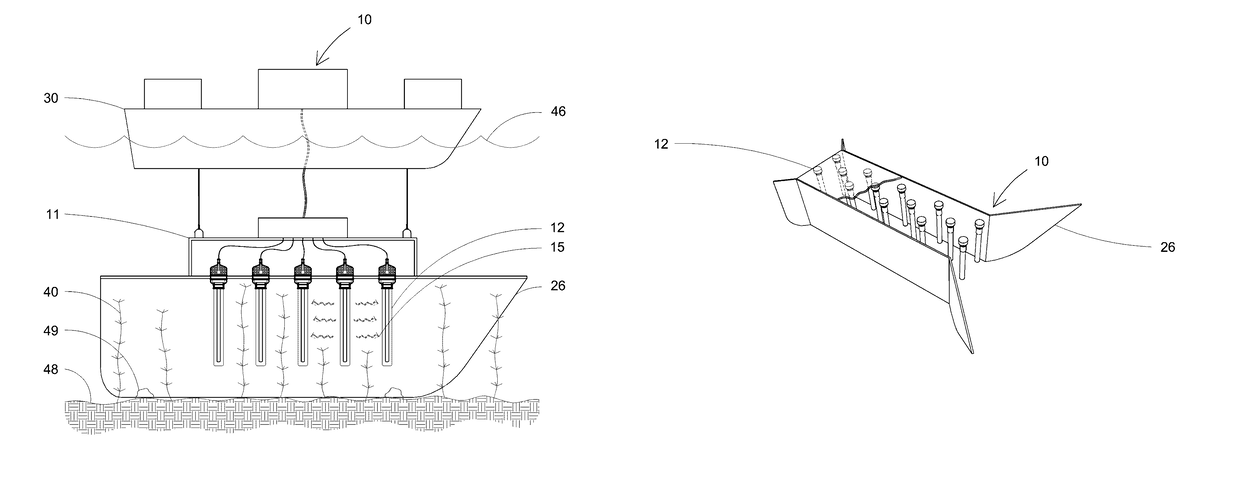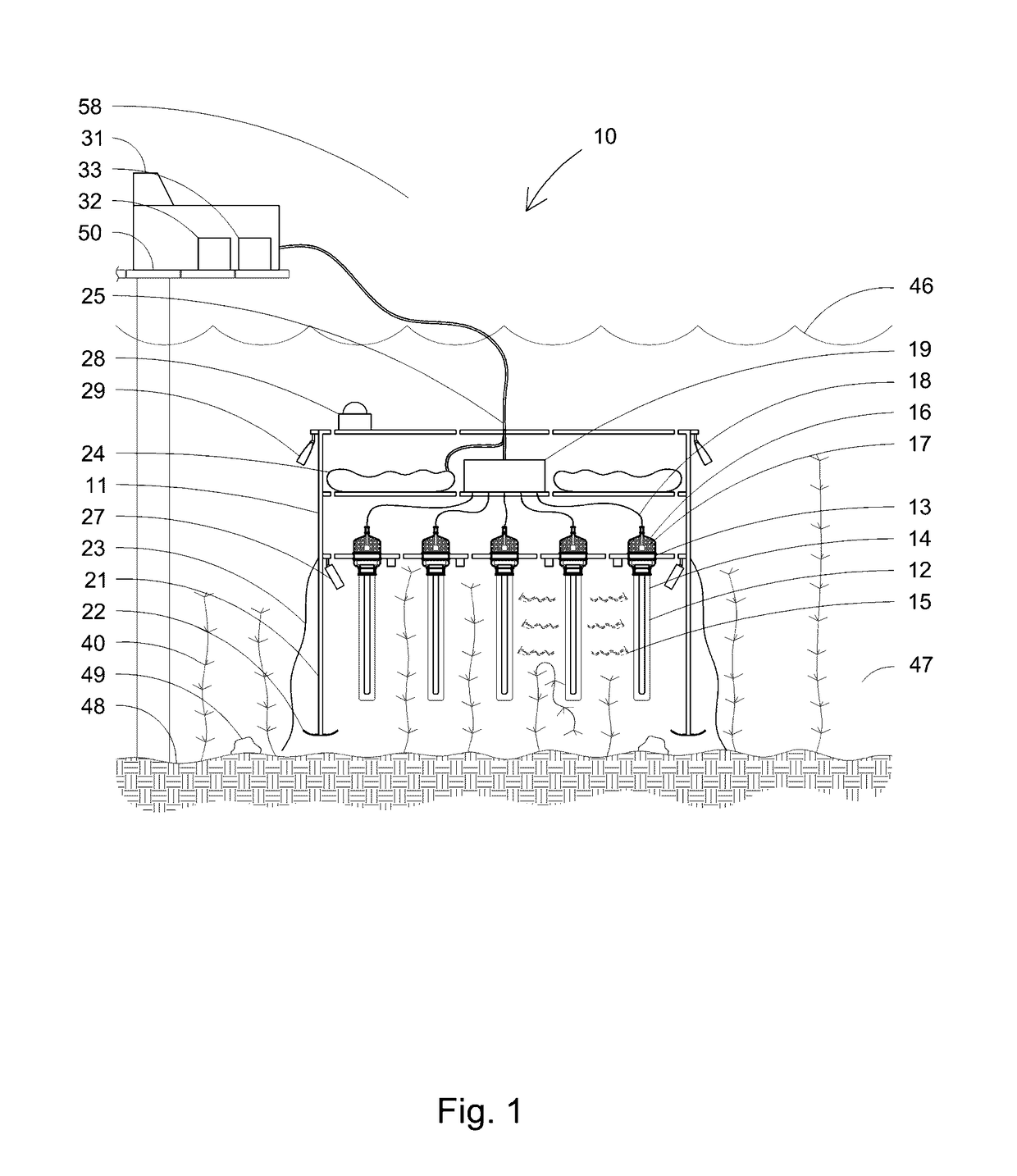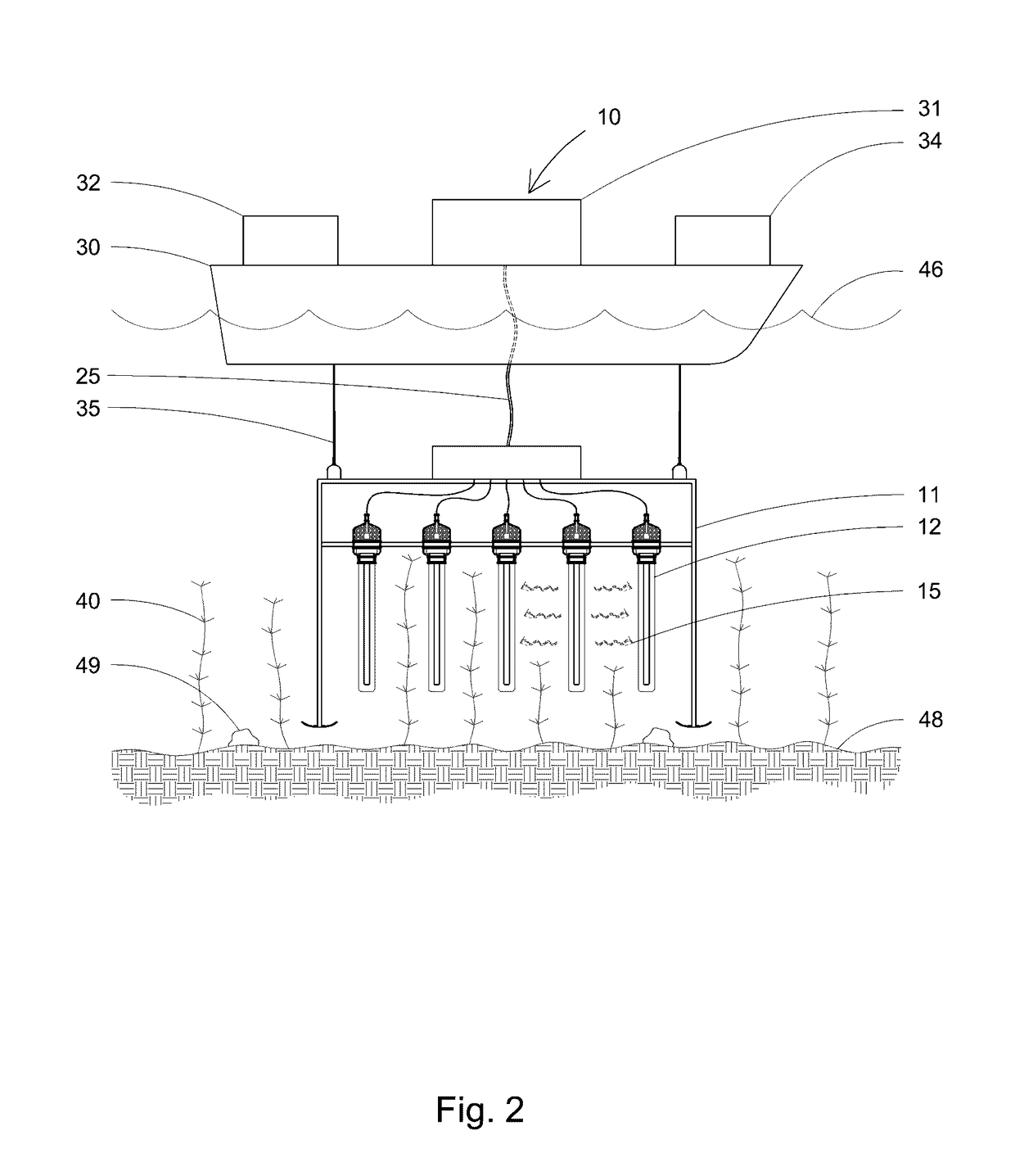Short-wavelength ultraviolet light array for aquatic invasive weed species control apparatus and method
a technology of short-wavelength ultraviolet light array and aquatic invasive weed species, which is applied in the direction of climate sustainability, agriculture tools and machines, thinning machines, etc., can solve the problems of personnel safety problems, health and safety concerns, and the cost and ineffective of prior art methods to control milfoil
- Summary
- Abstract
- Description
- Claims
- Application Information
AI Technical Summary
Benefits of technology
Problems solved by technology
Method used
Image
Examples
Embodiment Construction
[0082]The UV-C apparatus in accordance with the present invention allows for elimination of harmful herbicide use, does not contaminate the air or water, safe to use, reduces fuel use and energy costs, prevents the operator from exposure to harmful chemicals, has no adverse environmental effects, leaves no residual chemicals, ease of use, effectiveness and saves time and money. The apparatus is scalable from small to large. It can allow for using a hand held spot treatment apparatus of individual plants to a large towed apparatus that over a reasonable period of time can treat an infestation covering multiple acres.
[0083]A unique characteristic of UV light is that a specific range of its wavelengths, those between 200 and 280 nm (nanometers, billionths of a meter) are categorized as germicidal—meaning they are capable of inactivating microorganisms, such as bacteria, viruses and protozoa. This capability has allowed widespread adoption of UV light as an environmentally friendly, che...
PUM
 Login to View More
Login to View More Abstract
Description
Claims
Application Information
 Login to View More
Login to View More - R&D
- Intellectual Property
- Life Sciences
- Materials
- Tech Scout
- Unparalleled Data Quality
- Higher Quality Content
- 60% Fewer Hallucinations
Browse by: Latest US Patents, China's latest patents, Technical Efficacy Thesaurus, Application Domain, Technology Topic, Popular Technical Reports.
© 2025 PatSnap. All rights reserved.Legal|Privacy policy|Modern Slavery Act Transparency Statement|Sitemap|About US| Contact US: help@patsnap.com



